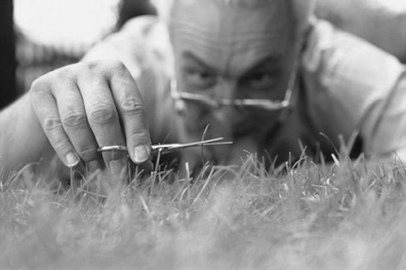See Part 1 here.
The gap between ignorance and knowledge is smaller than the gap between knowing and doing. So how can we overcome the knowing-doing gap?
1.Be willing to try something new.
Franklin Delano Roosevelt is quoted as saying “It is common sense to take a method and try it; if it fails, admit it frankly and try another. But above all, try something.” When the America Dental Association (ADA) releases new guidelines and recommendations they have been tested broadly. Dentists should seek information for themselves to confirm a practice guideline or recommendation presented to them – this overcomes the creditability bias. If the evidence stands up to evaluation, then the ADA’s guideline will only confirm what the dentist knows and implementing change will not be difficult. Similarly, the hygienist, dentist and dental assistant should work together to reinforce information for their patient. For example, when a major home care change is needed, each member of the dental team should have time during the patient visit to deliberately re-emphasize the value of the new habit. Although this may currently happen in an ad hoc manner, dentists should structure their office workflow in a way that affords time for each team member to underline the same message. Hearing the message multiple times from multiple perspectives helps patients overcome the creditability bias.

Source: http://www.farm5.staticflickr.com/4089/5033096126_e1d36eae86_b.jpg
2.Knowledge of change is insufficient.
Structures must exist that help move knowledge into actionable steps. The gap between ignorance and knowing is much smaller than the gap between knowing and doing. When research reveals a new method or material that is beneficial, there is a need for a dentist study group or informal collaborative group that allow dentists to discuss and develop an implementation plan for their own unique offices. This way, dentists form a support structure that will be available for mentorship and advise for new implementations. ADA’s release of the knowledge alone is completely insufficient.
Patients need an implementation plan too. For example, telling them to wear their nightguard regularly is not enough. Dentists should discuss an implementation plan like “Leave the nightguard next to your toothbrush. After you brush at night insert it. In the morning take it out and brush your teeth and your nightguard. Then put your nightguard back next to your toothbrush.”
3.Don’t be such a perfectionist. Research has shown that there are two types of perfectionism – normal perfectionism which can aid a dentist in doing high quality work, and neurotic perfectionism which involves setting unattainable goals and result in frustration when you fail to attain them. The dental profession attracts people who are perfectionists and this makes them very good at their work as a dentist. However, it can impede change and innovation as perfectionists tend to be over-analytical. Try something in a controlled environment and accept that errors and imperfection may occur – for example, practice a digital impression technique on a dentoform, then on family members or longstanding, trusted patients before moving it into regular clinical practice. Create comfortable environments to “practice” so that you are willing to evolve your clinical skills. Perfectionism and status quo bias can inhibit our patients’ willingness to try something new too. Dentists must create an environment for patients where it is acceptable to fail.

Source: Flickr.com
4.Drive out fear. The existence of anxiety and fear of failure fosters the growth of the knowing-doing gap. The biggest fears in dental medicine are litigation, adverse patient outcomes or even death. Consider the example of a patient who, under new guidelines doesn’t need antibiotic coverage but had antibiotics at their last dentist just 6 months ago. The new dentist is likely to provide antibiotics because risk of overprescribing are perceived as less severe than under-prescribing. However, the truth is that overprescribing can result in Clostridium difficile and patient mortality. The fear of overprescribing is easily overcome by utilizing our considerable training in pharmacology and medicine and using our critical thinking to make a judgment on the best approach for each unique patient. Fear should not influence the decision.

Source:www.signalvnoise.com
5.Overcome self-serving bias. In order to improve as a clinician, dentists must be open to feedback and learning. To that end, the most effective and constantly improving dental offices abolish hierarchies and allow dental assistants, front desk staff and hygienists to offer feedback to their dentist. Patients embarking on new habits like quitting smoking or improving dentist attendance should be given the freedom to suffer setbacks without judgment. Research has shown that many patients fail to attend their healthcare provider out of embarrassment and fear of criticism. A non-judgmental dental office will win over such patients’ loyalties forever.
CONCLUSION
The gap between ignorance and knowing is smaller compared to the gap between knowing and doing. To overcome the knowing-doing gap, dentists and patients need the following supporting structures.
- Have an attitude that is willing to try something new
- Develop an action plan for implementation of the change – knowledge of the benefit of the change is insufficient to cause change
- Abolish hierarchies and be more open to feedback from a variety of sources – even those who may be lower on the hierarchy than you.
- Create non-judgmental, low risk environments to “practice” the desired change.
- Build an office environment for you, your staff and your patients where failure is acceptable
Doctor. This is an excellent article with tangible things I can do for improvement. Keep up the great work
LikeLike
This makes perfect sense! I will start giving implementation plans to my patients without expecting miraculous change in home care. Love this article!
LikeLike
great steps to change. great article in concept and would love you to write in depth about this. really really helpful article
LikeLike